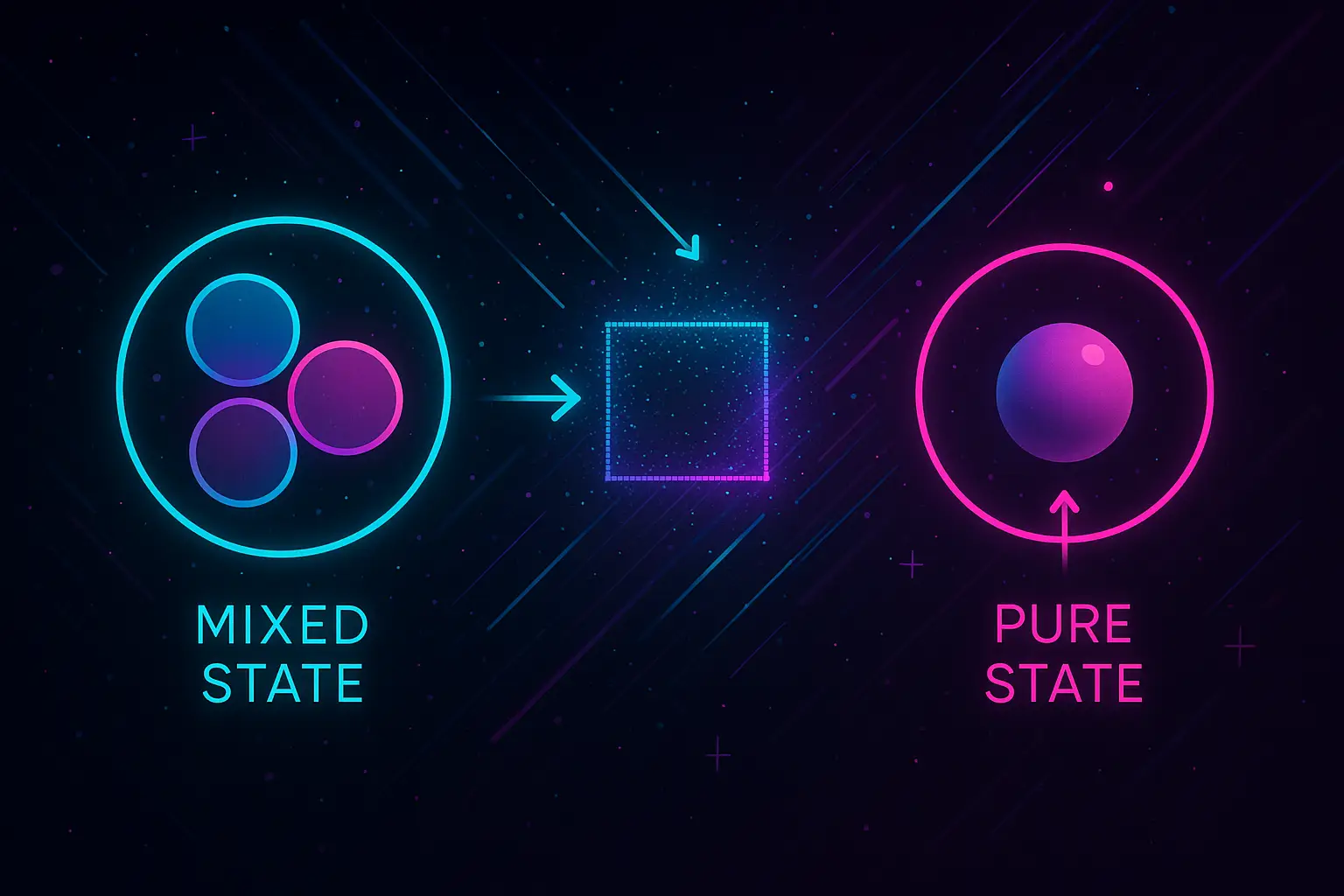Table of Contents
- Introduction
- Conceptual Overview
- The Wavefunction and Pure States
- Statistical Mixtures and Mixed States
- Density Matrix Representation
- Mathematical Criteria
- Visualization: Bloch Sphere
- Physical Interpretation
- Examples of Pure States
- Examples of Mixed States
- Quantum Ensembles
- Decoherence and the Emergence of Mixed States
- Experimental Distinction
- Entropy and Purity Measures
- Role in Quantum Information Theory
- Quantum State Tomography
- Conclusion
1. Introduction
In quantum mechanics, understanding the distinction between pure and mixed states is fundamental to interpreting the behavior of quantum systems. While pure states represent maximal information about a system, mixed states describe statistical uncertainty or entanglement-induced ignorance.
2. Conceptual Overview
- Pure states are coherent and deterministic descriptions of quantum systems.
- Mixed states represent an ensemble of pure states or the result of ignoring part of a larger entangled system.
3. The Wavefunction and Pure States
A pure quantum state is described by a single state vector \( |\psi\rangle \) in a Hilbert space. All measurable properties can be calculated directly from \( |\psi\rangle \). The density matrix is:
\[
\rho = |\psi\rangle \langle \psi|
\]
This state is said to be coherent and retains phase information.
4. Statistical Mixtures and Mixed States
A mixed state represents a statistical ensemble of pure states \( \{(p_i, |\psi_i\rangle)\} \). Its density matrix is:
\[
\rho = \sum_i p_i |\psi_i\rangle \langle \psi_i|
\]
where \( p_i \) are classical probabilities. The system is not in any one of the states \( |\psi_i\rangle \), but rather a probabilistic mixture.
5. Density Matrix Representation
Both pure and mixed states are represented using density matrices:
- Pure: \( \rho^2 = \rho \), \( \text{Tr}(\rho^2) = 1 \)
- Mixed: \( \rho^2 \ne \rho \), \( \text{Tr}(\rho^2) < 1 \)
This provides a unified framework for all quantum states.
6. Mathematical Criteria
Let \( \rho \) be a density operator:
- If \( \text{Tr}(\rho^2) = 1 \), the state is pure.
- If \( \text{Tr}(\rho^2) < 1 \), the state is mixed.
The von Neumann entropy,
\[
S(\rho) = -\text{Tr}(\rho \log \rho)
\]
is zero for pure states and positive for mixed ones.
7. Visualization: Bloch Sphere
For qubits, the state space is visualized as a Bloch sphere:
- Pure states: lie on the surface (\( |\vec{r}| = 1 \))
- Mixed states: lie inside the sphere (\( |\vec{r}| < 1 \))
This provides a geometric interpretation of coherence and statistical mixing.
8. Physical Interpretation
- A pure state reflects complete knowledge (e.g., prepared by a well-controlled experiment).
- A mixed state can arise from:
- Uncertainty in preparation.
- Tracing out part of an entangled system.
- Decoherence due to environmental interaction.
9. Examples of Pure States
- Electron in a definite spin state: \( |\psi\rangle = |\uparrow_z\rangle \)
- Photon in a definite polarization state: \( |\psi\rangle = \frac{1}{\sqrt{2}}(|H\rangle + |V\rangle) \)
Each of these has maximal coherence and minimal entropy.
10. Examples of Mixed States
- Unpolarized photon: 50% horizontal, 50% vertical.
- Thermal states at non-zero temperature.
- Qubits entangled with another system and then traced out.
11. Quantum Ensembles
A quantum ensemble is a collection of systems, each in a pure state \( |\psi_i\rangle \) with probability \( p_i \). The density matrix describes the average behavior of the ensemble, not the state of any individual system.
12. Decoherence and the Emergence of Mixed States
Decoherence causes pure states to evolve into mixed states due to entanglement with the environment. This results in suppression of interference and a transition to classical-like behavior.
13. Experimental Distinction
Although different mixtures can produce the same density matrix (ensemble equivalence), interference experiments or quantum tomography can reveal coherence and determine whether a state is pure.
14. Entropy and Purity Measures
- Purity: \( \gamma = \text{Tr}(\rho^2) \)
- Entropy: \( S(\rho) \)
These are essential for quantifying quantum information and decoherence. Pure states have maximal purity and zero entropy.
15. Role in Quantum Information Theory
- Pure states are the backbone of quantum algorithms.
- Mixed states model real-world noise and imperfections.
- Quantum channels, teleportation, and cryptography require careful control of both.
16. Quantum State Tomography
Tomography allows reconstruction of the density matrix from measurements. This reveals whether a state is pure or mixed and is a crucial tool in quantum computing and quantum optics.
17. Conclusion
The distinction between pure and mixed states is central to quantum theory. While pure states capture idealized behavior, mixed states reflect the statistical nature of quantum systems in practice. The density matrix formalism allows both to be treated on equal footing, enabling precise analysis of coherence, entanglement, and environmental effects.


